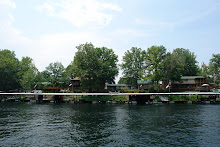What a difference a week makes. Seven days ago, we were setting record low temperatures below zero. Yesterday we set a record high of 73 degrees, and the forecast is looking like spring is here. But it’s not. Don’t be fooled. It’s mid-February.
But for now, boating on the lake is better than tolerable; it’s quite nice. This morning we actually had fog on the lake from the cold water and warm, humid air, just as in summer months. Generation has ceased except for a weird two-unit all-day run yesterday, which made no sense to me. I’ve told lots of people that the Corps probably wouldn’t run any water until this warm spell passes and we’re back to winter weather, but yesterday the Corps made me a liar . . . again.
I’ve done quite a bit of fishing this week, so some of my report is firsthand. The funniest and most successful trip was Wednesday when I got to fish with Guide Vince Elfrink. We took the boat out and went up past Short Creek to the Riverpoint boat ramp (south side of the lake), kept the boat a little south of center and fished to the deep side using an olive micro jig, two-pound line and a float, setting the depth at five feet. Between the boat traffic and a breeze every once in a while, the surface was broken enough to keep the jig moving. The rainbows liked it! We caught rainbows, one after the other, for two hours. Surprisingly, some of these rainbows were larger than the rainbows I caught earlier in the week in the trophy area, but there were a lot of dinks, too.
The Missouri Department of Conservation’s Shepherd of the Hills Hatchery has stocked its fish once this week down in the Landing area, while they have stocked rainbows from the federal hatchery in Neosho several more times this week. These rainbows typically are smaller although, learning the almost all our rainbows stocked in the last three months have come from Neosho, I know they’ve stocked some decent rainbows too.
Our water temperature is very cold for this time of year. I think our normal water temperature for February should be in the mid- to upper 40’s. Clint Hale, hatchery manager, told me they’re getting 42-degree water from their intake. I’m getting 39 degrees when I’m out in the boat below the dam while the water is running. We usually don’t see 39 until May. Colder than normal temperatures will slow the rate of rainbows’ growth. That may be the reason Shepherd is holding its rainbows and letting the Neosho ones take up the slack. Rainbows stocked in Taneycomo are supposed to average more than 11 inches in length.
Earlier in the week, I fished between Lookout and Fall Creek and threw 1/16th-ounce jigs using two-pound line. With no generation and very little wind, the trout bit fairly well. We caught a couple of rainbows pushing 19 inches, but most of the other trout were closer to 14 inches. We threw sculpin-, sculpin/peach- and sculpin/ginger-colored jigs.
With the water running yesterday, we drifted pink 1/125th-ounce marabou jigs under a float four feet deep from Lookout to Fall Creek and picked up rainbows here and there. We stayed from the middle to the shallow side of the lake. I bet if we had tied on a red San Juan worm and a #12 gray “peppy” scud on two-pound line with a small split shot, we would have slayed the rainbows drifting in the same area.
Below Fall Creek, fishing with a jig-and-float or throwing a jig straight should be one of the best techniques in catching fish this weekend. Use two-pound line if you dare but four-pound is okay. If you’re using two-pound line, throw a 1/16th-ounce jig, but if you’re using four-pound line, throw a 3/32nd-ounce jig. Keep several colors handy to try—sculpin, olive, brown, ginger and the combo colors with sculpin, ginger, peach and orange.
Night crawlers are catching larger rainbows than Power Bait but either bait is good. Inject the worm with some air to get it off the bottom and only use half at a time. You could slide a Gulp floating egg up above the night crawler to float it off the bottom, too. Gulp colors that have been good are white/orange and white/pink. Yellow nuggets have been hot, too.
One more pointer—when handling rainbows in the boat or on the dock, if you’re going to release the fish, handle the trout with a WET rag, not a dry one. All a dry rag does is wipe all the protective slim from a trout’s body, leaving it susceptible to bacteria and disease. If the hook is down deep in the trout’s throat, cut the line; don’t pull it out.

